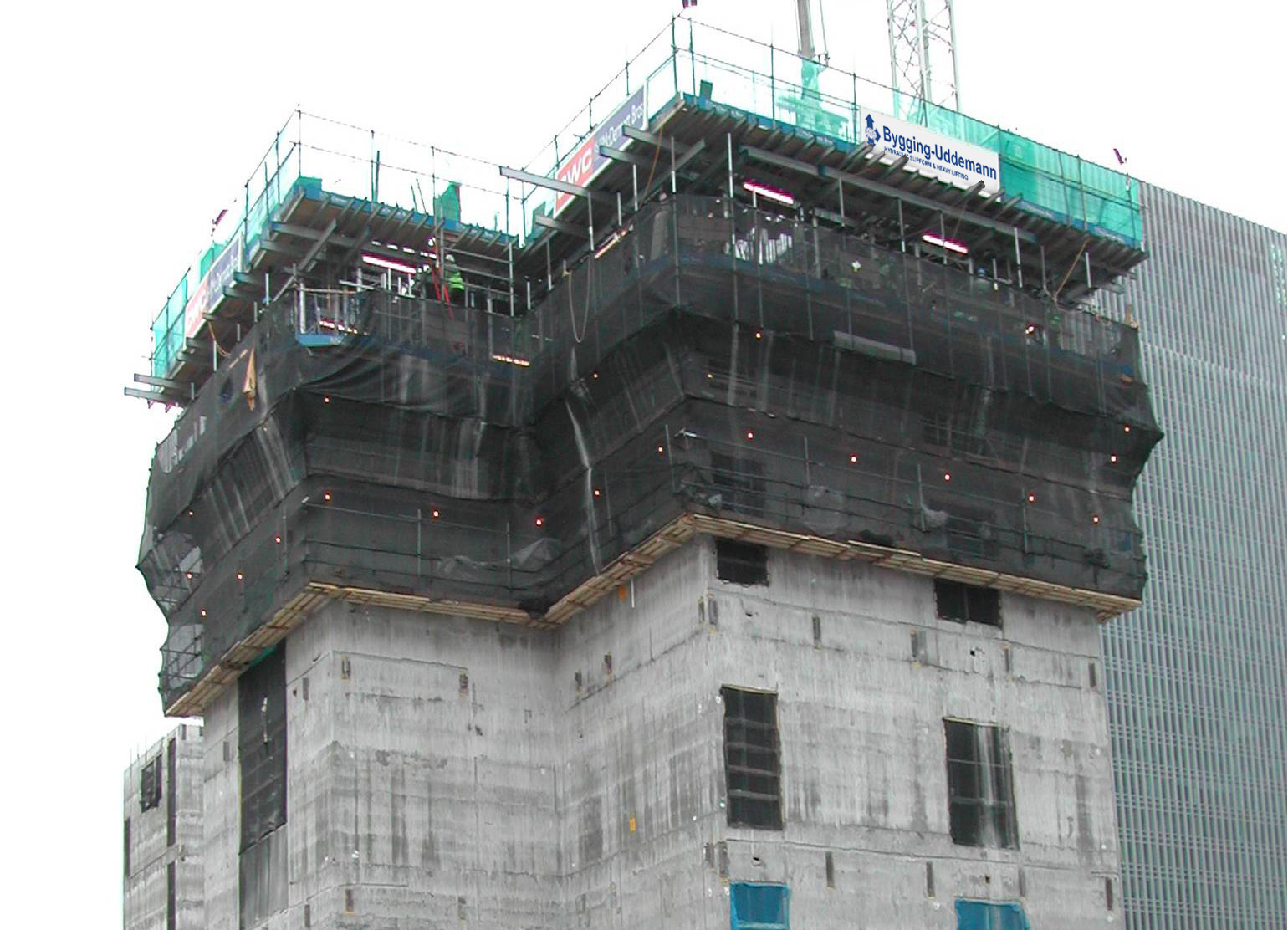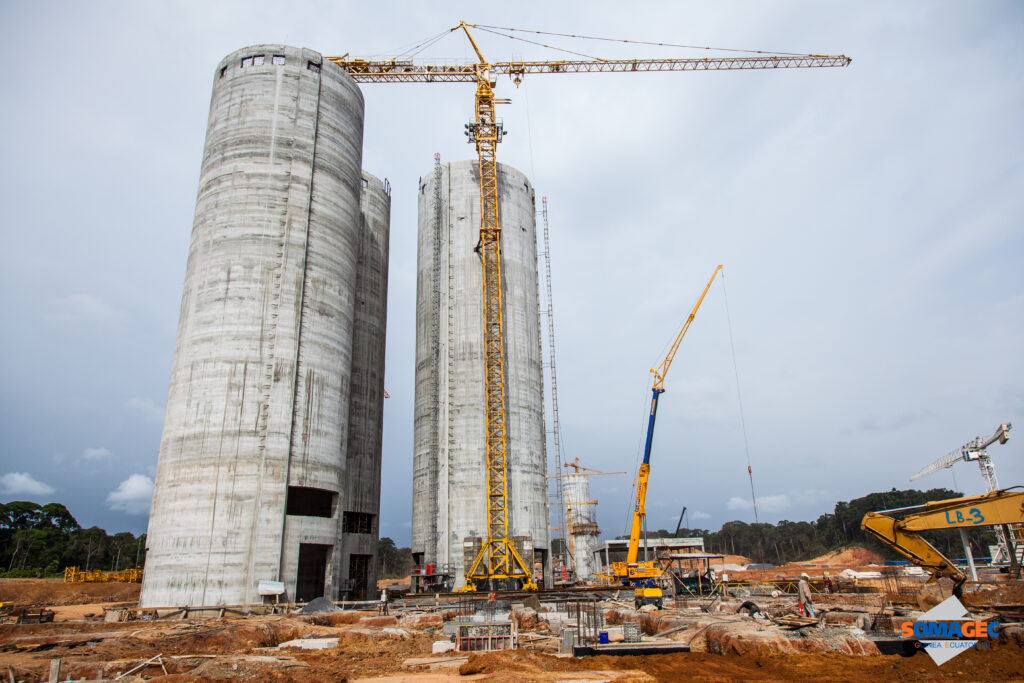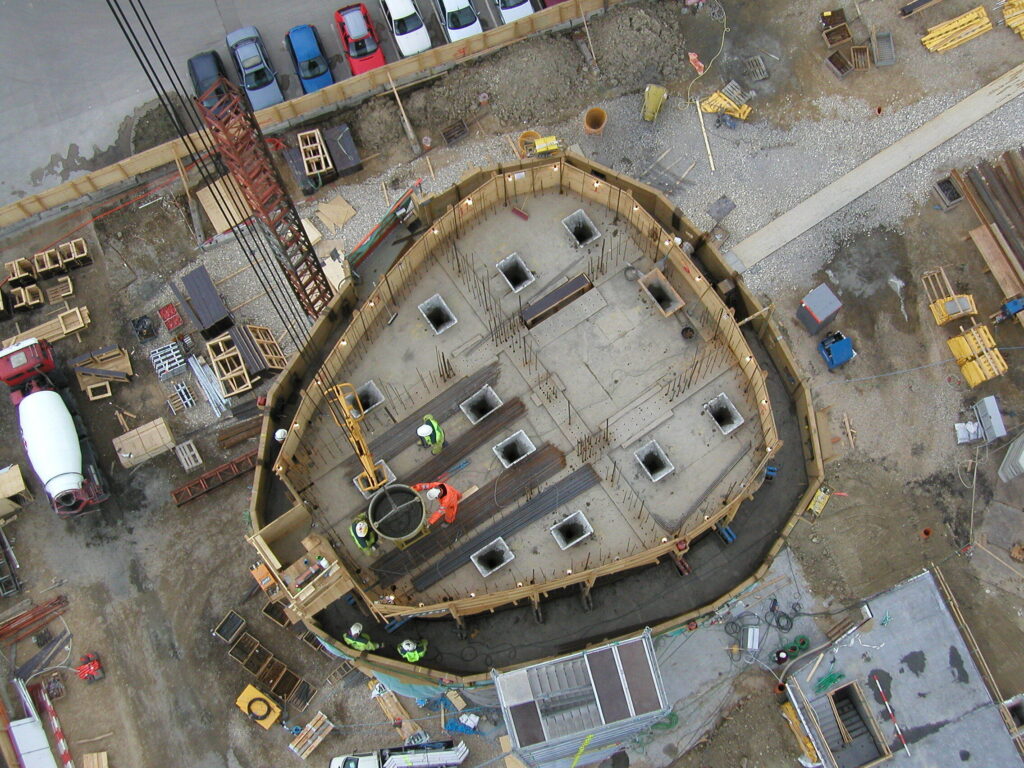The advantages of slipform construction
As previously mentioned, the slipform is significantly faster than the traditional ways of building tall concrete constructions. Since the slipform with the working deck constantly moves upwards, the workers always have a stable platform to work from, which significantly increases the safety of the staff. The actual reinforcement of the construction is also facilitated as the iron is easily transported up to the superior speed and cost effectiveness of the method. The molding reinforcement and finishing work occur while the mold is moving upwards. In some cases, cranes do not need to be used at all. In cases when cranes are used, they can follow the sliding form without having to be adjusted as the construction grows taller. The technology does not require any kind of specialist competence. Usually, the work takes place 24 hours a day but can be adapted to the customer’s wishes.
Facilitates complicated constructions
A slipform makes it possible to perform complex concrete constructions such as conically designed bridge abutments with cross-sections and varied thicknesses. We use three different slipforming techniques 𑁋 traditional, conical, and gantry slipform technique. More information about the different types can be found under the respective headings in the menu.
Hire a specialist with the right experience
We are specialized in all types of traditional and conical slipforming, and we have helped further develop the slipform technique for over 70 years. With our solid experience, we know what is required for a successful slipform construction and can tailor slipforming solutions to suit your specific needs. Over the years, we at Bygging-Uddemann have carried out a multitude of both famous and lesser-known slipform constructions with successful results all over the world. Contact Bygging-Uddemann for more information on how to successfully complete your project.





